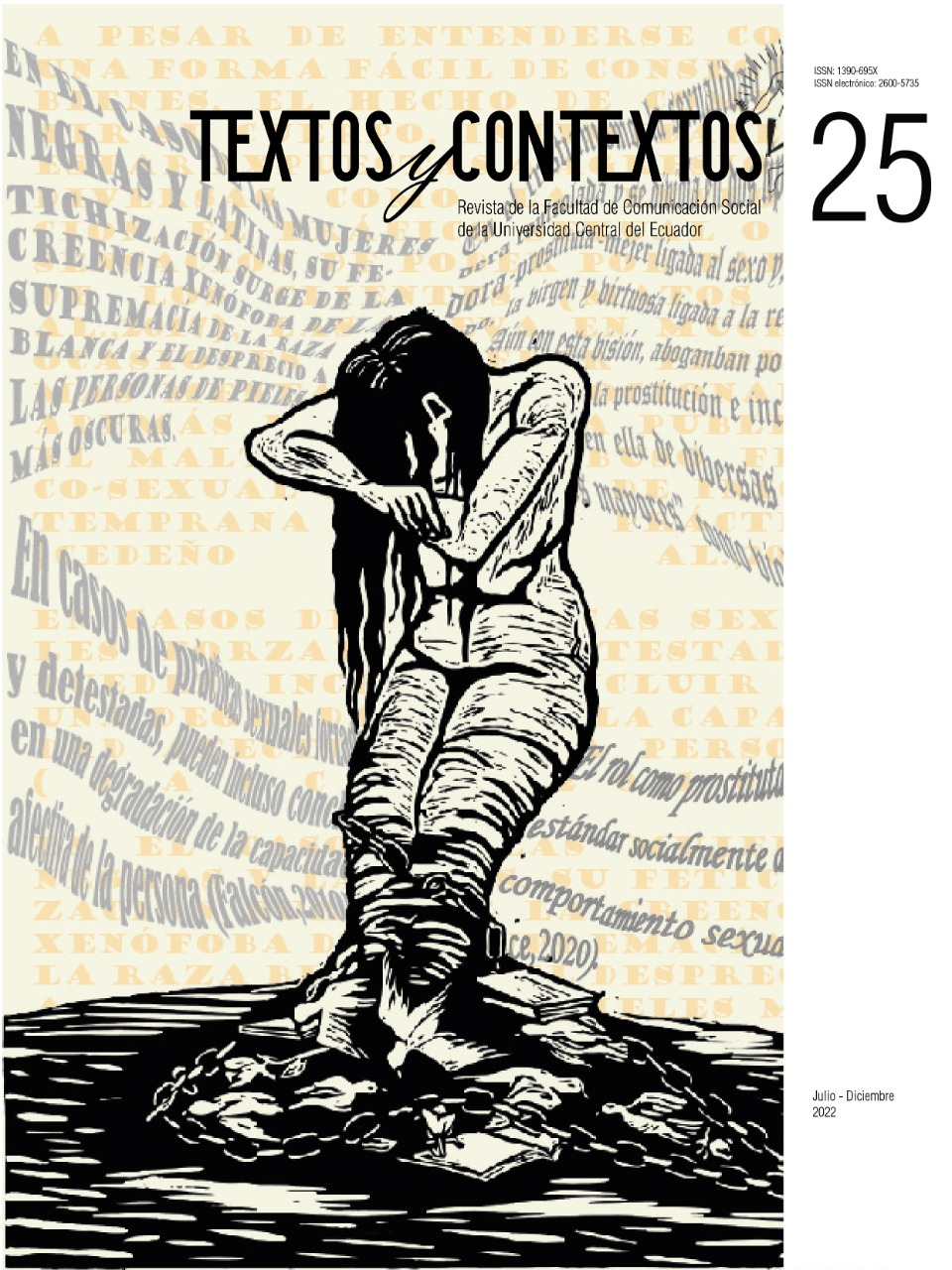Symbolic violence and representation of women in television fiction
Main Article Content
Abstract
The objective of this work will be to analyze the symbolic violence exercised against women in television fiction. To do this, we will start from the contributions of Simone de Beauvoir regarding the alterity of women in stories and myths to verify that they have always been defined as "others" and we will point out that this has also been transferred to the world of television. We will see that the cinematographic stories have been translated into an exercise of symbolic violence against women since, for a long time, they were only represented by the archetype of good woman or misguided woman. The importance of this type of stories will be pointed out not only because they are a reflection of society, but also because of the influence they exert on the lifestyles of those who consume them. Finally, we will see that the emergence of on-demand content platforms and the notable increase in productions that they have brought with them, have contributed regarding the change in the content that is generated. For this reason, we will conclude by providing some examples of television series that allow us to observe a change in the way in which women are represented and perceived in series.
Downloads
Metrics
Article Details

This work is licensed under a Creative Commons Attribution-NonCommercial 4.0 International License.
References
Aguilar, P. (1998). Papeles e imágenes de mujeres en la ficción audiovisual. Un ejemplo positivo. Comunicar: Revista científica iberoamericana de comunicación y educación, 11, 70-75. https://doi.org/10.3916/C11-1998-11
Bach, M., Altés, E., Gallego, J., Plujá, M. y Puig, M. (2000). El sexo de la noticia. Reflexiones sobre el género en la información y recomendaciones de estilo. Icaria Editorial.
Bernal-Triviño, A. (2019). La concienciación de los medios sobre la violencia machista. Una interpretación por parte de sus víctimas. Comunicación y Género, 2(1), 15-31. https://doi.org/10.5209/cgen.64529
Bernárdez, A. (2012). Modelos de mujeres fálicas del postfeminismo mediático: una aproximación a "Millenium 1", "Avatar" y "Los juegos del hambre". Anàlisi. Quaderna de comunicaciò, (47), 91-112. https://eprints.ucm.es/id/eprint/22899/
Bourdieu, P. (2015). Sobre la televisión. Anagrama.
Bourdieu, P. y Passeron, J. (1996). La reproducción, elementos para una teoría del sistema de enseñanza. Laia S.A.
Colaizzi, G. (2001). El acto cinematográfico. Género y texto fílmico. Lectora: revista de dones i textualitat, (7), 5-13. https://revistes.ub.edu/index.php/lectora/article/view/7013
De Beauvoir, S. (2015). El segundo sexo. Ediciones Cátedra.
De Pizan, C. (2001). La Ciudad de las Damas. Ediciones Siruela.
Gavilán, D., Martínez-Navarro, G. y Ayestarán, R. (2019). Las mujeres en las series de ficción: el punto de vista de las mujeres, Investigaciones Feministas, 10(2), 367-384. https://revistas.ucm.es/index.php/INFE/article/view/66499
Goldstein, L. (2014). Makers: women in Hollywood [mediometraje]. Kunhardt Films.
González, B., Marcos-Ramos, M. y Portillo-Delgado, C. (2020). Gender representation in Spanish prime-time TV series, Feminist Media Studies, 20(3), 414-433. https://doi.org/10.1080/14680777.2019.1593875
Harmetz, A. (1980, 2 de enero). Sherry Lansing, ex modelo, nombrada directora de Fox Productions. The New York Times. https://www.nytimes.com/1980/01/02/archives/sherry-lansing-former-model-named-head-of-fox-productions.html
López, M. y Nicolás, M.T. (2015). El análisis de las series de televisión: construcción de un modelo interdisciplinario. Comhunitas, 6(1), 22-39. https://dialnet.unirioja.es/servlet/articulo?codigo=5896204
Martín, A. (2002). Las mujeres y la “paz en casa” en el discurso renacentista, Chronica Nova, 29, 217-244. https://revistaseug.ugr.es/index.php/cnova/article/view/2002
Mateos, R., Gimeno, R. y Martínez, M. (2009). Presencia de estereotipos en los medios de comunicación. Análisis de la prensa digital española. Administrando en entornos inciertos. XXIII Congreso Anual AEDEM, 1-16, Sevilla: ESIC. https://idus.us.es/handle/11441/77849
Medina, M., Gutiérrez, R. y Diego, P. (2016). Dos hombres y medio: la sitcom y el paraíso de la masculinidad. En González, M., Arregui, P. y Montoro, C. (Coords.), Familia y sociedad en el siglo XXI (págs. 113-126). Editorial Dykinson.
Roig, E. (1992, 23 de septiembre) “Murphy Brown”, se ensaña con Dan Quayle. El País. https://elpais.com/diario/1992/09/23/internacional/717199217_850215.html
Wolf, N. (1991). El mito de la belleza: cómo se utilizan las imágenes de la belleza contra las mujeres. Emecé Editores.
Woolf, V. (2011). Una habitación propia. Seix Barral.
Zurian, F. A., Martínez, D. y Gómez, H. (2015). La ficción en la televisión generalista norteamericana y la representación de (nuevas) masculinidades. Área Abierta, 15 (1), 53-62. https://revistas.ucm.es/index.php/ARAB/article/view/47609/45390




